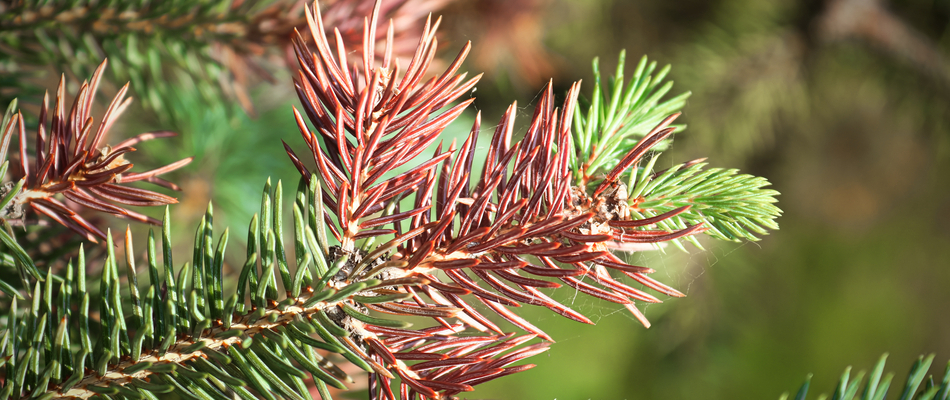Trees are a beautiful addition to any property, especially when they are well cared for. However, just like your lawn, trees are susceptible to diseases and other health problems that could impact both their appearance and health. Iron deficiency, spruce needle cast, and fire blight are a few health problems to watch out for on your trees this spring in Iowa. Keep reading to learn more about the signs to look out for with each of these diseases or health problems so you can keep your trees in great condition all year long!
Iron deficiency can cause your trees' leaves to turn yellow and wilt.
Iron deficiency, also called iron chlorosis, is caused by high pH levels in the soil that keep trees from absorbing iron and other vital nutrients. It often results in the leaves wilting and becoming brittle, along with turning yellow and having dark green veins. Yellow leaves are often a sign of a lack of chlorophyll, which is what makes them green. Without chlorophyll, your tree may have trouble growing and staying bright during the spring season. If you suspect your tree has an iron deficiency, you should call tree care professionals right away. Professionals have different methods they can use to make sure your tree gets the iron it needs to bounce back and grow healthy.
Spruce needle cast can damage the needles on your trees.

Spruce needle cast is a fungal disease that commonly appears in the spring and causes the needles on spruce trees to turn brown or dark purple and fall off. The disease starts from the bottom of the tree and works its way upwards, so those needles are more likely to die first. There are a couple of ways to stop the disease and help your tree recover. Fungicide treatments will stop the disease from spreading through your tree, and fertilization treatments will help it recover from any damage it sustained.
Make sure you pick up any needles that fell off your tree from spruce needle cast because they can continue spreading the disease or reinfect it.
Fire blight is a very destructive disease that needs to be caught early to save your tree.

Fire blight is a highly destructive disease that, if left untreated, can cause lots of damage to your trees. It can kill flower blossoms, fruit, leaves, and even entire trees if it gets bad enough. Trees that have been infected by fire blight often look like they’ve been scorched with fire, hence the name. Flowers and leaves may look like they’ve been soaked in water before shriveling and turning brown or black as they die. Fire blight can also form cankers in the bark where bacteria can remain for the dormant winter months.
As of now, fire blight has no cure, but there are several ways it can be treated to save your tree! Tree care professionals can administer antibiotic treatments that will kill the blight-causing bacteria and protect the rest of the tree. You can also hire professionals to prune infected branches to remove the parts of the tree that are infected or have already died.
Think your tree might have one of these diseases? Call us today to schedule our treatments!
At A+ Lawn & Landscape, our professionals can help bring your trees back to health this spring after suffering from an iron deficiency, spruce needle cast, or fire blight. We offer iron chlorosis, spruce needle cast, and fire blight treatments to stop these diseases in their tracks. We also offer fertilization treatments for your trees to give them all the nutrients they need to bounce back from any damage.
We offer our tree care services to residential and commercial properties in Des Moines, IA, and the surrounding areas, like West Des Moines and Ankeny. Call us at (515) 289-2020 to schedule any of our treatments!





Comments (0)
Thanks for your comment!
Thanks for your feedback! Your comments have been successfully submitted! Please note, all comments require admin approval prior to display.
Error submitting comment!
There is a problem with your comment, please see below and try again.